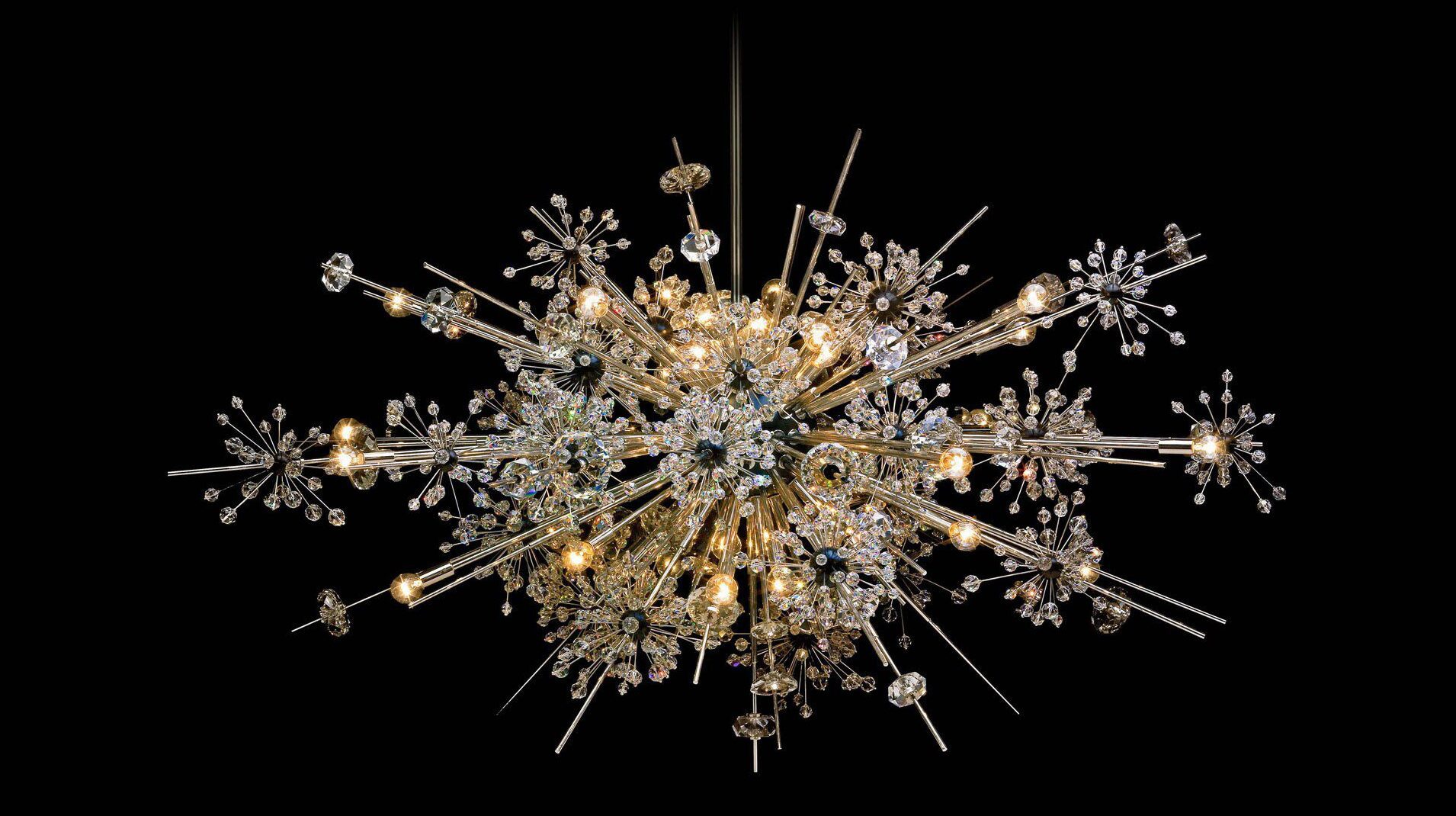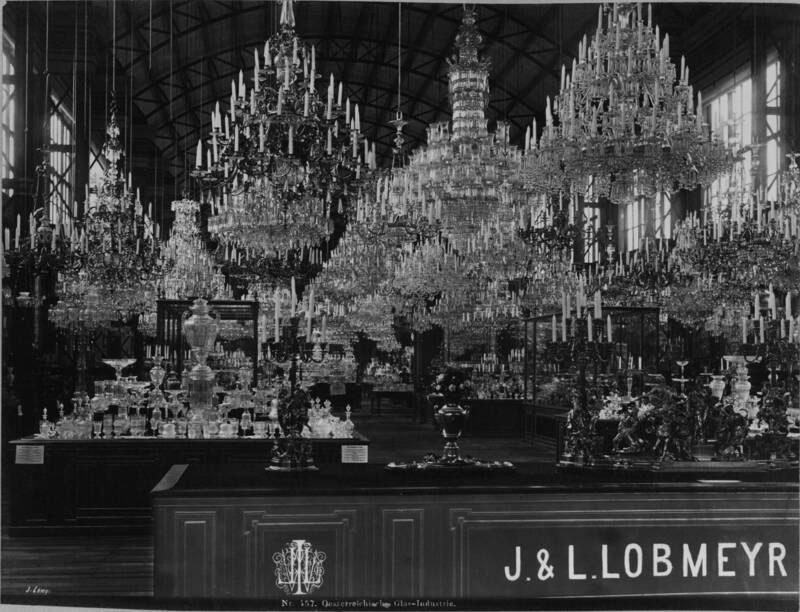
Metropolitan Chandelier Model 6725-L-16, 1966 © J. & L. Lobmeyr
A walk down Vienna’s Kärntnerstrasse to No. 26 reveals a glass treasury six generations in the making. J. & L. Lobmeyr is celebrating 200 years since its founding in 1823 with a special exhibition at the MAK, the Museum of Applied Arts. Their prestigious clientele has included the Imperial Court in Vienna.
Lobmeyr’s lighting creations can be found in some of the leading opera houses in the world. On September 13, 1966, the Met opened in Manhattan with the first night’s curtain and the light of 12 chandeliers designed by Lobmeyr. Hans Harald Rath, a member of the Lobmeyr family and the brand’s director from 1938, was responsible for the design inspired by Edward K. Harrison, the Met’s chief architect. At the time the chandeliers were given the nickname ‘Starburst’ or ‘Sputnik’. The first prototype of the chandelier was a baby potato with matches stuck into it.
In a tradition which hails back to the Vienna World’s Fair of 1873—developed upon later at the Paris International Exhibition of 1925 where Lobmeyr was awarded the Grand Prix Diplome—Lobmeyr is centered on the exceptional in glass and lighting. Its chandeliers are not only found in the Met Opera; they also grace two of the Kennedy Center’s auditoriums. The doughnut chandelier suspended at the Vienna State Opera is also Lobmeyr-designed.

Opera houses and chandeliers are one but facet of glassmaking. The brand has ventured into many other projects. Lobmeyr has had a close relationship with Herend Porcelain of Hungary since the time of Emperor Franz Joseph I and included creating the imperial glass and porcelain at the Royal Palace in Gödöllö, Hungary, which was Empress Elisabeth’s favorite residence abroad.
During World War II, the emperor’s porcelain was largely destroyed when Soviet Army cadets entered the palace pantry and smashed nearly all of the ceramic treasure, only to be called back by their general, when they let out a burst of machine-gun fire onto the palace facade.
Following more than half a century from when that heinous incident had taken place, Lobmeyr and Herend were commissioned by the Hungarian government to design a new set of state porcelain and glass to be used on special occasions. At the time, the emperor’s porcelain at Gödöllö Palace was inscribed with his crown from the dual monarchy of 1868. The new porcelain no longer has his initials on it, but is decorated with the crown of St. Stephen of Hungary. It has been used on occasions such as the state visit of Cardinal Secretary of State Angelo Sodano to Hungary.
What does a 200-year-old family business mean in today’s world? Lobmeyr has been among the most consistent applied arts companies from its beginnings in imperial Vienna well into the 21st century. The name is synonymous with the Austrian royal family’s services and with tradition which dates to a few years after the Congress of Vienna in 1814. The astonishing aspect of these glassworks is that in them tradition and novelty go hand in hand.
Replete with a 200th anniversary restoration of its Kärntnerstrasse shop, Lobmeyr spells a living history of the Austro-Hungarian monarchy, with works displayed throughout the world in museums, public buildings, restaurants, hotels, and a variety of exclusive retail shops.
Lobmeyr’s designs have numerous inspirations, not least of them Joseph Lobmeyr Sr.’s extensive travel to Egypt in the 1840, where he found inspiration from the buildings at the Suez Canal. He was also moved by other famous architecture, like the Otto Wagner Church in Vienna.
The MAK has over 300 objects on display as well as a number of testamentary documents about Lobmeyr, including photographs from significant points in its history. The outstanding collections of glassware can be seen at the exhibition and many of the chandeliers are also on display along with sketches for important glasses and carafes. A series of glasses designed by Tyrolean Martino Gamper in 2016 illustrates with exceptional beauty that glass is not frozen in time. It melds timelessness with contemporary design.
The Glitz and Glamour MAK exhibition is open Tuesday to Sunday from 10 a.m. to 6 p.m. and runs through September 24, 2023.